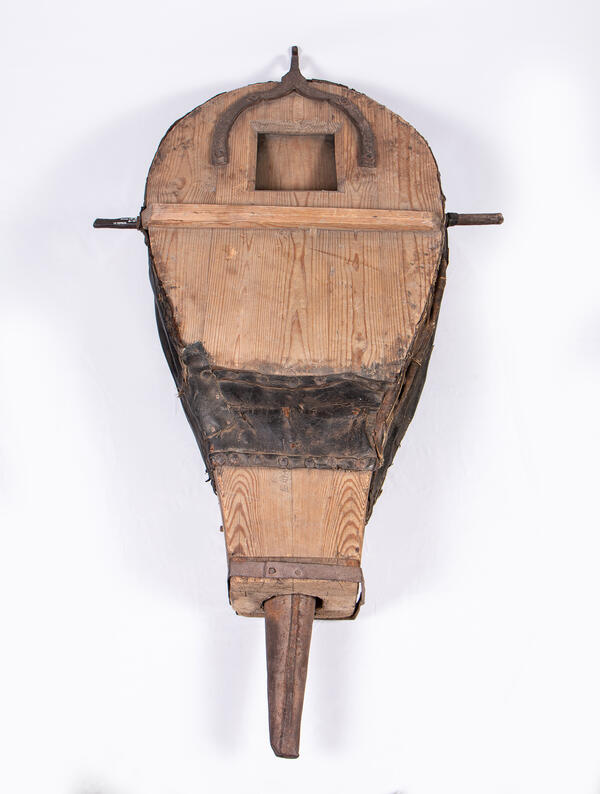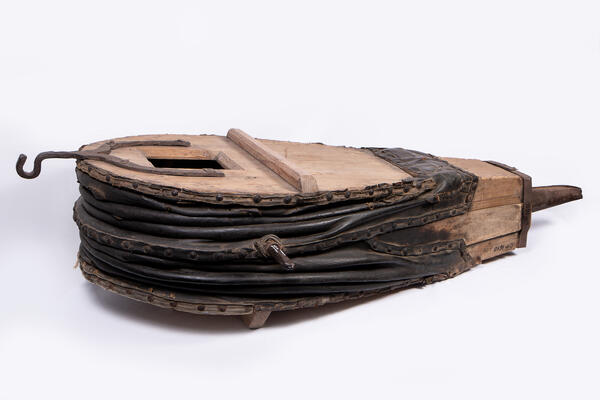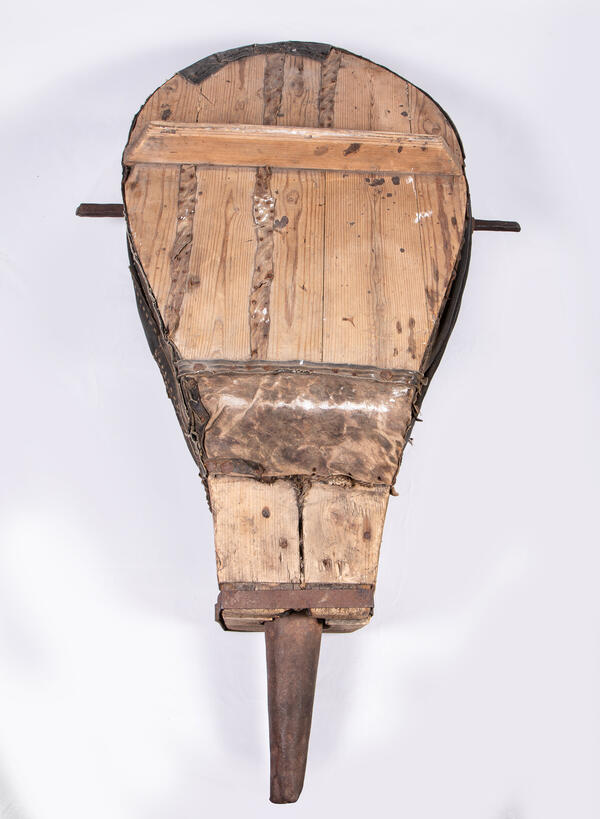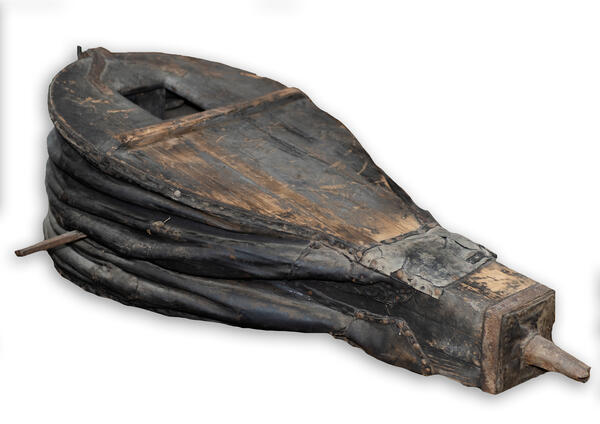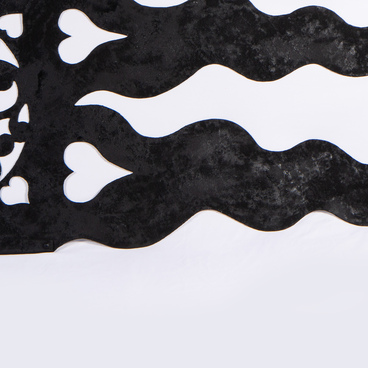Bellows were used to blow air to the fire during the forging of iron. Their shape did not change much over time — the device consisted of two elongated heart-shaped or wedge-shaped boards that were connected to form a leather accordion bag fitted with valves. The bellows in the collection of the Nevyansk Historical and Architectural Museum have an end piece in the form of a truncated wooden pyramid with three teardrop-shaped boards attached: the upper and lower ones are hinged, and the middle one is rigidly fixed. The size of the bellows depended on the size of the forge they were used for and the kind of product the blacksmith was making. It took from one to three cowhides to make one pair of bellows. The device had several disadvantages: it took up much space, wore out quickly due to overheating, lacked efficiency, and the process of using it was labor-intensive.
At first, the metal was heated to a temperature of 1,500–1,600 °C, which in blacksmithing parlance was called the “white heat”. The metal then began to glow with a bright yellow color. After that, mill scale was removed from the metal surfaces, and they were hammered to join. There was hardly any light in the blacksmith’s shop so that it would be easier for blacksmiths to watch the shades of the hot metal and keep the temperature under control. Overheated iron became brittle, and the resulting products broke and crumbled. On the other hand, if the metal was not hot enough, it was very difficult, if not impossible, to process it. Experienced blacksmiths knew how to determine the temperature of the metal using their own beards. The forger brought a red-hot workpiece to his face, and if the hairs in the beard began to crackle and curl, this meant that the iron was sufficiently heated, and it was possible to start forging.
From the 18th century onwards, blacksmithing remained one of the essential manufacturing processes in the Nevyansk plant. This can be attributed to the fact that the plant focused on metallurgical production, and skilled craftsmen and raw materials were readily available. Blacksmiths’ shops were normally on the outskirts of the village, away from residential buildings: blacksmithing involved working with fire, and it was important to prevent the neighboring houses from catching fire.
In the center of the blacksmith’s shop there was usually a forge, with an anvil next to it. The main tools a blacksmith used included bellows to blow air onto a fire, as well as a hammer, tongs, and a vise. Various types of iron, steel, and, occasionally, sheet copper were used as raw material. Blacksmiths made metal tools, household utensils, chains, harnesses, cowbells, bells, and other items, both for sale and for their own needs.

